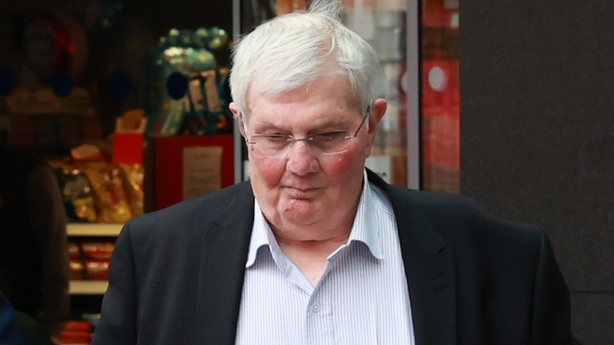The inquests into the deaths of the 48 people in the 1981 Stardust fire has heard that the bodies of half the victims were found in an area near three fire exits.
The Dublin District Coroners Court was shown a "body map" which detailed the approximate position of where the bodies of the victims in the ballroom were found.
Coroner Dr Myra Cullinane told the jury that it was a "difficult document" and "difficult for the families to have the document displayed".
Former manager of the premises Eamon Butterly is continuing his direct evidence and is facing more questions from legal teams representing families of the victims.
Des Fahy KC, representing ten victims' families, told the court that the bodies of 24 of the dead were found in an area around three of the fire exits, and said he was suggesting "very clearly" that those people died because the exits were locked when the fire broke out, and that "they couldn’t escape".
"I deny that," Mr Butterly replied.

Mr Butterly was asked if he had another explanation for it. He replied that the place was "full of smoke, the lights went out, everybody panicked," adding that they did not know where they were.
He was asked if a possible explanation was that the 24 could not escape because the doors were locked. Mr Butterly replied that "anything is possible," before adding that he was told at 11.30pm that the doors were unlocked. He also said that when he went outside, "all the doors were open".
"I’m suggesting that the reason they couldn’t escape was because those exits were locked," Mr Fahy said.
Mr Butterly said he was saying that Tom Kennan, the head doorman at the time, told him at 11.30pm that all the doors unlocked, and said "I can’t say more than that".
Later, Mr Butterly said the "body map" did not show that the doors were locked, rather it showed where, "unfortunately" the bodies were. Mr Fahy put it that the situation regarding the doors was a "catastrophe" and was so because they were locked.
"The doors weren’t locked," Mr Butterly replied.
Numerous times today Mr Butterly said he was told at 11.30pm or "around" then that the doors were unlocked, and at one point said it could have been 11.45pm. Under questioning, he said "I’m not lying. I’m trying to do my best to remember".
Under questioning Mr Butterly also said that locks and chains were not provided by the company who had fitted the doors and that someone connected to the Stardust had bought them.
Mr Fahy also said put it to him that the reason locks and chains were on the doors was nothing to do with security, and said they were fitted to stop people opening the doors from the inside.
"No," Mr Butterly said, "they were fitted so nobody would get in from the outside."
Mr Fahy said there was no security reason for the locks and chains and said they were fitted to the inside to "ensure profits inside were maximised".
"That’s not right, I deny that," Mr Butterly replied.
He also said that it remains his evidence that he never saw emergency exits locked when patrons were on the premises.
It was put to him that the only way, walking around the premises not seeing them locked was to do so with your "eyes shut". "Ok," said Mr Butterly, "I disagree".
Before asking questions today Mr Fahy pointed out that one of the those who died, Martina Keegan, would have turned 59 years old today.
Mr Butterly also denied suggestions that the club was "being run on the cheap".
He was being asked about a motor in the heating system that had "burned out" prior to the fire.
The inquests heard how Mr Butterly initially said that it had been replaced but then said it looked like it was not.
Seán Guerin, SC, put it to him that Mr Butterly knew the premises were being "managed on the cheap" and that it was easier to leave a faulty electrical installation in place rather than replace the motor.
"Totally false," replied Mr Butterly.
"The place was not run on the cheap that’s for sure," he said.
He was also questioned about the electrics in the club and it was said by Mr Guerin that the electrical installation in the premises was "so poor that at anytime a fire might have started".
"You are so wrong, it was the best wired premises around," Mr Butterly said.
At one point, Mr Butterly said the cause of the fire was not an electrical fault and said: "I don’t know how many experts were there…they couldn’t find an electrical fault, there was no electrical fault."






